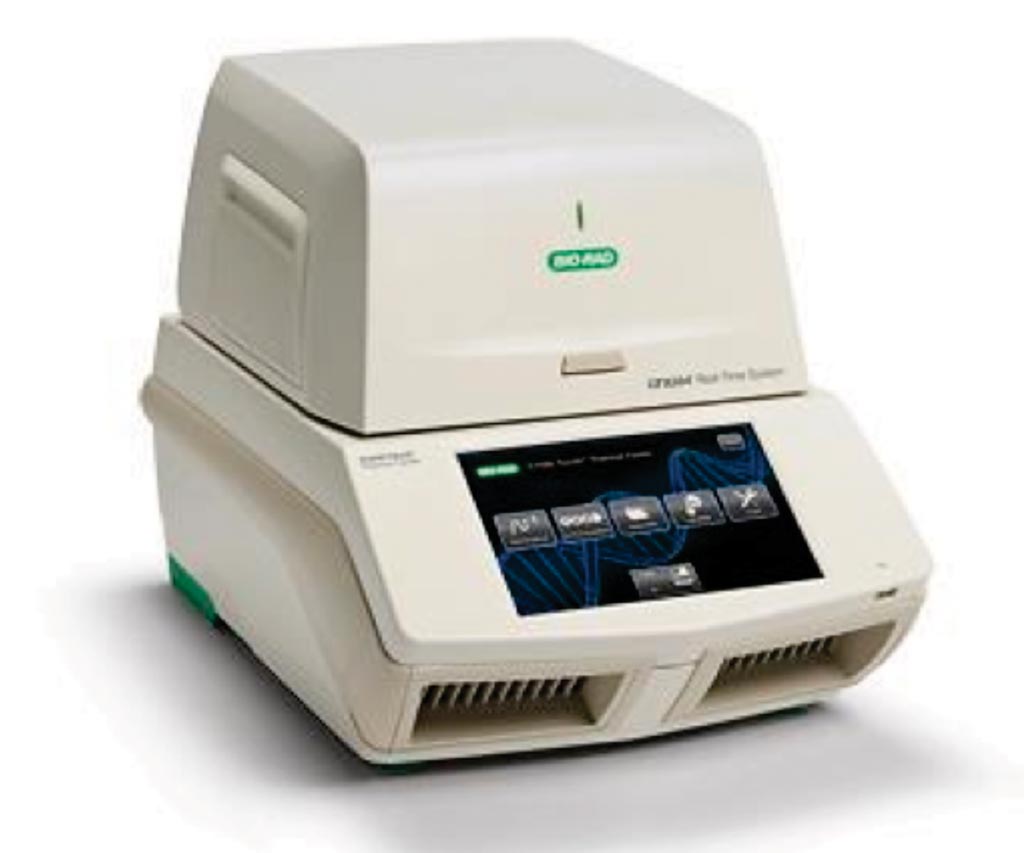Gene-Based Risk Scores Predicts Alcoholic Cirrhosis
By LabMedica International staff writers
Posted on 23 Jan 2019
Alcoholic chronic liver disease, with a prevalence of around 12% in the European and North-American populations, is characterized by a broad spectrum of conditions ranging from simple steatosis to alcoholic steatohepatitis, cirrhosis, and hepatocellular carcinoma.Posted on 23 Jan 2019
Environmental factors, aging, genetic predisposition, and gender play a pivotal role in alcoholic cirrhosis development and progression. The most established environmental factors influencing the susceptibility to chronic alcohol-related liver damage are represented by dose and pattern of alcohol intake, diet, obesity, diabetes, and smoking.

Image: The CFX384 real-time PCR detection system (Photo courtesy of Bio-Rad Laboratories).
An international team of clinical and molecular scientists working with The Sahlgrenska Academy (Göteborg, Sweden) retrospectively examined a total of 416 male at-risk alcohol drinkers. The possible presence of cirrhosis was also assessed and the time of cirrhosis diagnosis was reported using data from hospital discharge papers, medical records, physical examination, blood tests, imaging, and endoscopy.
Buffy coat fraction was recovered from whole blood EDTA and DNA extraction was performed using QIAamp DNA Blood Kit. PNPLA3 rs738409, CD14 rs2569190, TM6SF2 rs58542926, and MBOAT7 rs641738 variants were genotyped by TaqMan genotyping assay. Post-polymerase chain reaction (PCR) allelic discrimination was performed on a CFX384 Real-Time System by measuring allele-specific fluorescence.
The team reported that PNPLA3, CD14, and TM6SF2 were associated with alcoholic cirrhosis prevalence. PNPLA3 and CD14 were also associated with its incidence. A threshold of 7.27 was identified as cutoff for the predictive risk of alcoholic cirrhosis development in 36 years from the onset of at-risk alcohol consumption with 70.1% sensitivity and 78.7% specificity. The negative predictive value and the positive predictive value were 90.2% and 48.6%, respectively.
The authors concluded that identifying genetic and environmental candidate factors that confer susceptibility to alcoholic cirrhosis development could potentially inform the clinician on patient management. It would be useful, for clinicians, to predict, since the first visit, the risk over time of alcoholic cirrhosis in male patients with at-risk alcohol consumption and to select a population with a high risk to develop cirrhosis in order to plan a patient-tailored therapy. The study was published on January 10, 2019, in the journal The Application of Clinical Genetics.
Related Links:
The Sahlgrenska Academy














